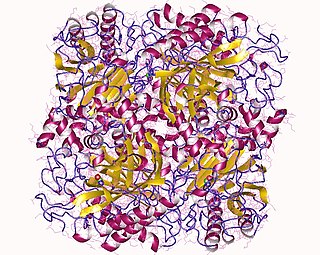| N-carbamoylsarcosine amidase | |||||||||
|---|---|---|---|---|---|---|---|---|---|
| Identifiers | |||||||||
| EC no. | 3.5.1.59 | ||||||||
| CAS no. | 92767-52-7 | ||||||||
| Databases | |||||||||
| IntEnz | IntEnz view | ||||||||
| BRENDA | BRENDA entry | ||||||||
| ExPASy | NiceZyme view | ||||||||
| KEGG | KEGG entry | ||||||||
| MetaCyc | metabolic pathway | ||||||||
| PRIAM | profile | ||||||||
| PDB structures | RCSB PDB PDBe PDBsum | ||||||||
| Gene Ontology | AmiGO / QuickGO | ||||||||
| |||||||||
In enzymology, a N-carbamoylsarcosine amidase (EC 3.5.1.59) is an enzyme that catalyzes the chemical reaction
- N-carbamoylsarcosine + H2O sarcosine + CO2 + NH3
Thus, the two substrates of this enzyme are N-carbamoylsarcosine and H2O, whereas its 3 products are sarcosine, CO2, and NH3.
This enzyme belongs to the family of hydrolases, those acting on carbon-nitrogen bonds other than peptide bonds, specifically in linear amides. The systematic name of this enzyme class is N-carbamoylsarcosine amidohydrolase. This enzyme is also called carbamoylsarcosine amidase. This enzyme participates in arginine and proline metabolism.



